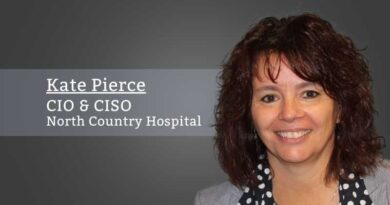How the Pandemic Helped Providers and Consumers Embrace New Technologies
By Richard S. Temple, VP/CIO, Deborah Heart and Lung Center
The COVID-19 pandemic has been devastating to healthcare organizations on many levels. If there is to be even a tiny silver lining to a pandemic, the pandemic engendered rapid adoption of consumer-based tools that often were spoken about a lot, but not adopted on a widespread basis. One of the most compelling examples is the rapid adoption of “virtual visits” (often also known as “telehealth”) wherein a doctor conducts his/her exam “virtually” over a secure video link with the patient without the need for the patient to visit the doctor and potentially get exposed to COVID. Due to the public health emergency, Medicare waived a lot of their restrictions on the use (and reimbursement for) of virtual visits and healthcare providers pivoted in very short order to conducting the vast majority of their visits through this new paradigm. Even visit types that one would think would be particularly tricky to do effectively met with success, such as physical therapy visits. As restrictions on in-person visits eased somewhat as the pandemic progressed, providers did move back increasingly to seeing their patients in offices, albeit with new processes to minimize the time in waiting rooms and in the presence of other patients or staff.
Urgent Care centers also took advantage of mobile tools that would allow patients to see how long they would have to wait to see a practitioner, which was a great patient satisfier.
The early stages of the pandemic proved that practices can indeed provide effective care through virtual visits, though virtual visits’ popularity scaled back quite a bit over time. Providers found that they were more comfortable with an in-person model, though many still offer the virtual visit as an option. There were concerns in the provider community that some commercial payors, and eventually Medicare once the public health emergency is lifted, would either no longer pay for these visits or would pay at significantly reduced rates. The uncertainty about reimbursement and the extra technological steps and occasional glitches pushed many providers back, at least in part, to their traditional models of care.
One area where virtual visits have sustained a great deal of popularity is in the Urgent Care center realm. Urgent Care centers found that they could handle a significant percentage of the cases coming to them through virtual visits, thereby freeing up in-person slots for those who had more acute illnesses or injuries. Urgent Care centers also took advantage of mobile tools that would allow patients to see how long they would have to wait to see a practitioner, which was a great patient satisfier.
As patients found themselves locked down for months in their homes with the pandemic, they came to adopt mobile technology tools in the healthcare space and expected that these tools would be user-friendly and easy-to-navigate just like their Amazon experience always has been. Given the intrinsic complexities of healthcare involving things like third-party insurance requirements, prior authorizations, approval requirements from providers, availability of particular providers, and many other things, attempting to replicate an Amazon experience was always going to be a very tall order. But the realities on the ground with the pandemic spurred many providers (and electronic health record vendors) to offer and refine new “patient portal” tools such as pre-registration, collecting medication, allergy, and other clinical information online prior to a patient’s visit so as to minimize the amount of time a patient had to be in a potentially infectious environment. While still a work-in-progress, these improved patient portal functions have had a positive impact and have been adopted by patients and families at levels not previously seen prior to the pandemic. These new consumer-facing technologies were designed to work well both in a traditional desktop computer environment as well as a mobile phone environment. The success of these initiatives has led to a broader concept in healthcare which is being called the “Digital Front Door”. What the Digital Front Door concept aspires to do is to provide different “channels” through which a patient can communicate with their healthcare provider (and, likewise, their provider can communicate with them). The Digital Front Door envisions provider/patient communication happening not only by phone, but also by text, by “Chatbot”, through the provider website, and, again, through a much improved “patient portal” user experience. The access by telephone would still have a role in the Digital Front Door, but with a much-improved experience, minimizing hold times and several transfers to different extensions, and improving upon the lengthy “call trees” that patients often encounter.
With mobile phones being so prevalent, even among elderly people, texting has become a tool that providers are eager to leverage. Whereas many people don’t answer calls from numbers they don’t recognize (or, even worse, hospital phone numbers are often flagged as “potential spam”), people do open text messages and act upon them. People are increasingly used to communicating with businesses through their cell phones (and not necessarily by voice) and are deriving a lot of value from choosing how they wish to engage with their healthcare providers. This is a relatively young technology, but one with a lot of promise and one that, if properly deployed, can act as a compelling competitive differentiator for providers in their respective communities.



